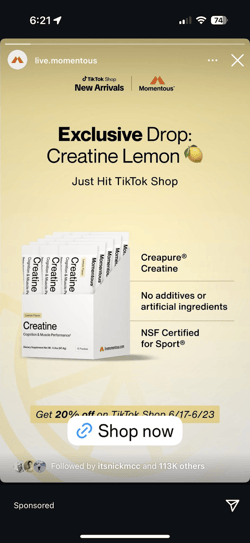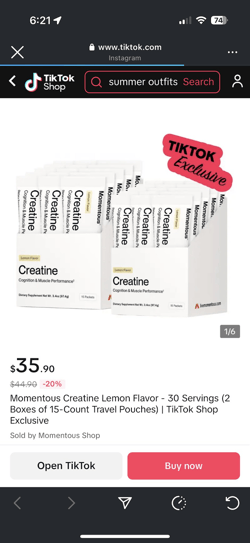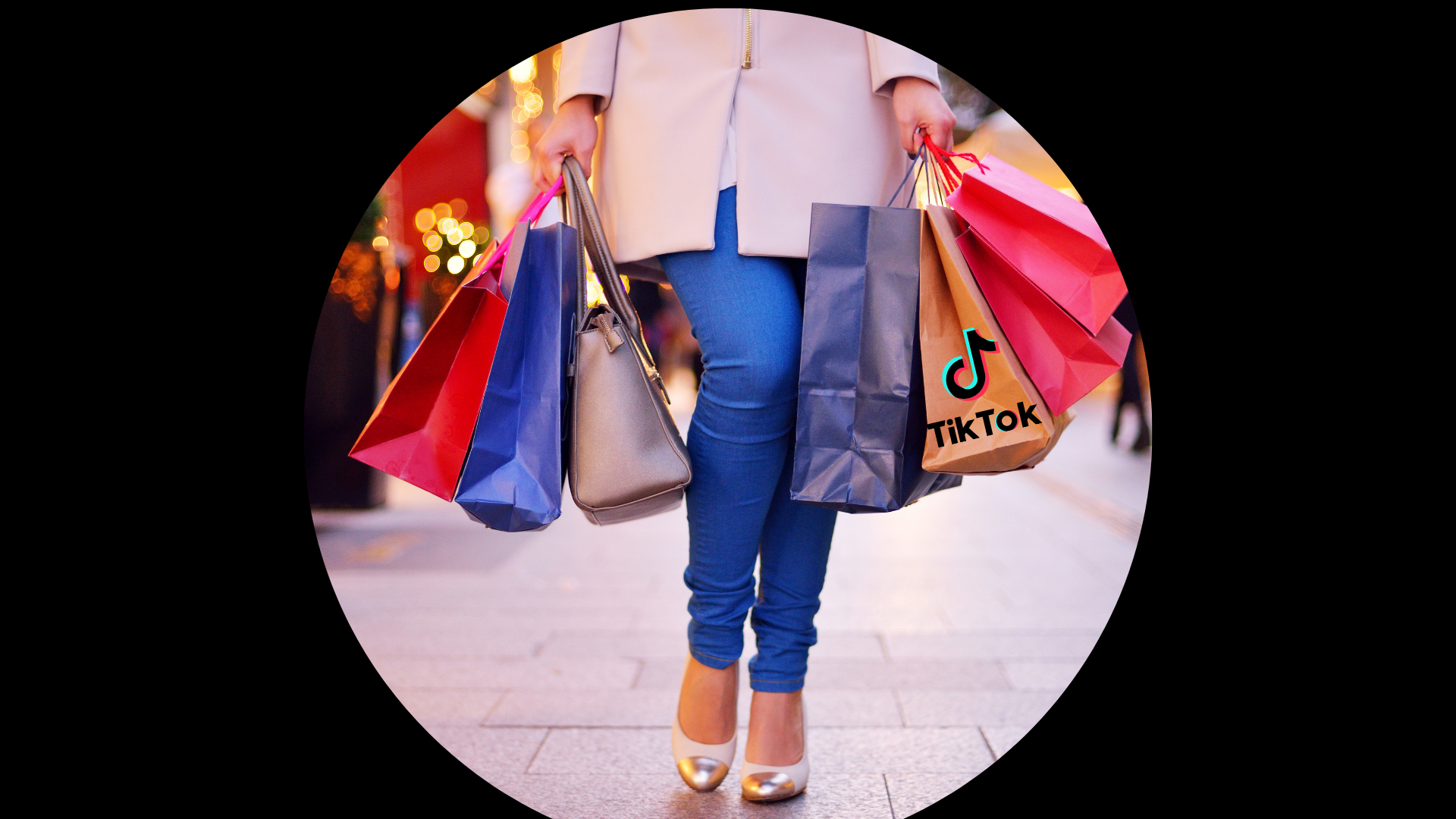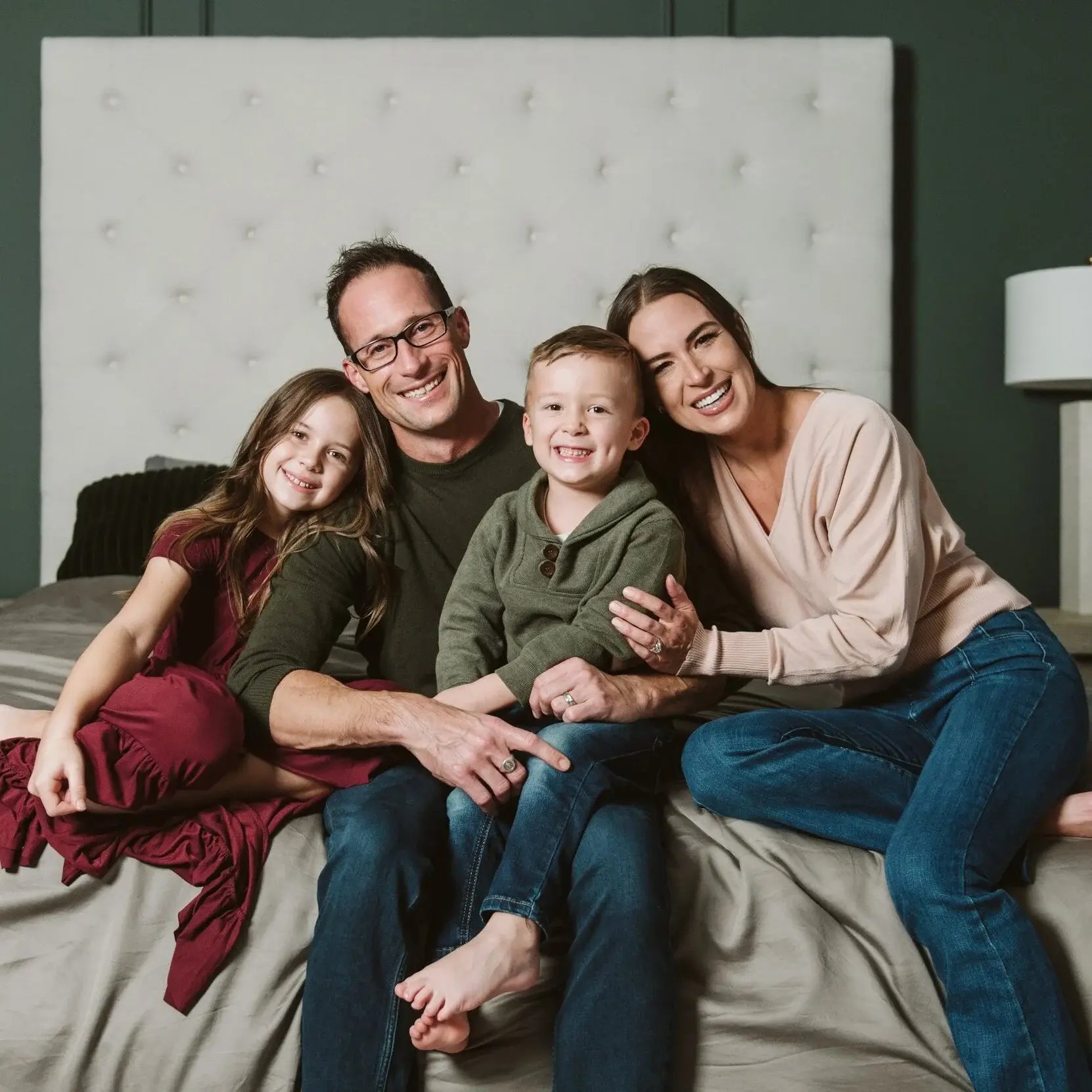“TikTok made me buy it.”
If you’ve been on TikTok lately, you’ve probably seen it…
A creator holding up an interesting gadget. A viral skincare demo with a “Shop Now” button. Even Oreo’s official account posting scrappy, lo-fi videos instead of polished campaigns.
That’s TikTok Shop in action, and today it’s impossible to ignore.
The numbers alone demand attention. TikTok Shop hit $5.8B in US GMV in H1 2025, up 91% year-over-year, while global GMV doubled in the same period. Black Friday generated over $100M in US sales (Retail Dive).
The scale is undeniable. But the sentiment among operators is mixed. For every brand calling TikTok Shop a “superpower,” another whispers it’s a margin trap.
So the question marketers are asking right now isn’t whether TikTok Shop has scale. Clearly, it does. The question is: is it worth it for your brand?
Why TikTok Shop exists
To answer that, you have to start with the cultural shift driving TikTok’s rise.
Consumers are tired of polished feeds. On Instagram, every third post feels like an ad. On Google, the SERP is a wall of sponsored results. That fatigue is what fuels TikTok.
Here, content feels authentic, messy, and unfiltered. And in this world, the algorithm rewards engagement, not follower count, meaning anyone can go viral.
Riley Garcia, Co-Owner of Betterbrand, remembers the shift well:
“We began looking into TikTok in 2022. At the time, we hadn’t figured out virality yet. But by July 2022, we finally hit it and spent the next nine months dialing in content. We were one of the first brands to feel that TikTok ‘spillover.’ So when we got invited to the TikTok Shop beta, it was a no-brainer.”
Think of TikTok Shop as the monetization layer on top of that cultural behavior.
The conversion–AOV paradox
Let’s start with the good news. TikTok Shop converts.
Consistently, brands report higher in-app conversion rates compared to sending traffic off-platform. TikTok makes it seamless: you see a product, you tap “Buy Now,” and before you know it, the order’s confirmed.
The not-so-good news? Those orders are small. Triple Whale data shows “The average order value for TikTok was $59.60, and much lower than both Meta ($100.17) and Google Ads ($88.17) for BFCM 2024.”
Riley has seen the same pattern. “Repeat buyers are less frequent on TikTok Shop because it’s an impulse-buy platform. Our lowest prices live there, which drives lower AOV compared to Amazon or DTC.”
Why? Three reasons:
- Discounts are capped. Brands can’t stack promotions endlessly.
- Upsells and cross-sells are buried below the fold. Few people scroll past the checkout button.
- Impulse buying dominates. The dopamine hit of “TikTok made me buy it” drives conversion, but it doesn’t necessarily build big baskets or repeat orders.
That’s the paradox: high conversion, low AOV. Great for volume. Tricky for margin.
Ash Melwani, Cofounder and CMO of Obvi, has lived this tension. His take that he posted on X: “TikTok Shop is messy, chaotic, and constantly changing. The only way forward is to build a system that thrives in the chaos.”
For Obvi, that means structuring incentives for creators that offset thinner margins. They offer 25–30% base commission, plus an extra 10% on Spark Ad revenue. It’s generous, but it ensures creators stay motivated to push sales even when basket sizes are smaller.
For operators, this is the first big trade-off. TikTok will get you the order, but it won’t necessarily fatten the cart.
The economics are changing
If the early days of TikTok Shop felt like free money, those days are gone.
When Shop launched, referral fees were just 2%. Today, they’re about 6%. Add in fulfillment, affiliate, and Spark ad costs, and unit economics start to look a lot like Amazon.
Then there’s tariff volatility… Sigh.
In early 2025, tariffs on Chinese imports briefly spiked to 145% before settling at 30%, causing US seller volume to drop 20–25% month-over-month.
Riley’s perspective: “Top-performing brands don’t usually use TikTok Shop as a heavy profit center. Many treat it as a loss leader to dominate and create spillover into Amazon or retail. For us, we’ve managed to stay profitable—but only because of the systems we built early.”
This is also where misconceptions creep in. Things like…
- “My audience isn’t on TikTok.” Not true. 30% of TikTok users are over 35. Your buyers may already be there.
- “TikTok didn’t work for us before.” Often because brands failed to post consistently or invest in organic presence. TikTok punishes half-hearted testing.
- “It’s not brand-safe.” In fact, TikTok’s full-screen, endemic format eliminates adjacency risks that plague other platforms.
But, look. TikTok Shop isn’t automatically unprofitable. That said, making it work requires the right playbook and the stomach to ride out volatility.
For Obvi, those systems look like tight testing frameworks: send product, give a focused brief, let creators post, boost everything with GMV Max, then track. Simple, repeatable, and built to move fast.
Or as Riley summed it up:
“In business, there are always unexpected costs and hurdles. TikTok Shop had quite a few of them because it's such an undiscovered platform. My team and I’s philosophy is that progress loves speed, so if we are able to identify the hurdles, make calculated decisions that are a net benefit for the business, and execute with conviction, we are making all the right moves in times of difficulty.”
The incrementality question
The million-dollar question for operators is this: are TikTok Shop sales net-new, or just a shift from DTC and Amazon?
Holiday data suggests the pie is growing. Black Friday 2024 generated more than $100M in US sales on TikTok Shop.
But attribution is messy. Across 4,000 brands, TikTok drove 788% more conversions than last-click attribution showed, according to Fospha.
That’s the Halo Effect. TikTok drives discovery, but buyers often convert later on Amazon or a DTC site. If you’re only looking at click-based data, you’ll underestimate its impact.
But Riley’s experience adds nuance
“Our TikTok customers are completely separate from other channels. If they’re buying on TikTok, it’s because that’s where they shop. They’re not the same as our Amazon or DTC customer,” he said.
That won’t hold true for everyone. Some categories—especially higher-ticket items—may see overlap. The only way to know? Test incrementality. Survey buyers, run geo holdouts, measure profit per session (PPS), not just ROAS.
Tl;dr? Keep tests small, briefs simple, and cycles fast. When the numbers add up, scale. When they don’t, cut.
Scaling in the chaos
Getting started is easy. Scaling is hard.
Competition is fierce. Novelty fades. TikTok keeps changing the rules.
That’s why brands are experimenting with new ways to scale while protecting margins.
For Obvi, scaling meant building a creator flywheel. They set up a Discord hub where affiliates swap winning videos, spark codes, and hooks. Monthly incentives keep the engine humming: hit $2K GMV, win an iPhone; hit $10K GMV, win a vacation.
For Betterbrand, scaling meant going all-in on content. Riley’s team hired W-2 creators in-house. They were among the first to adopt GMV Max, landing them a TikTok case study and commercial:
The payoff led to 350,000 units sold in 24 months. “Our conversion rate was very high initially,” Riley said, “but it’s calmed down as more sellers piled in. You have to keep evolving.”
And some brands are even experimenting outside TikTok. Interestingly, Momentous ran paid Instagram Story ads that linked directly to TikTok Shop during its “New Arrivals” campaign:
 .
. 
It sounds backwards—Meta traffic into TikTok—but it worked because TikTok incentivized sellers with extra exposure (and sometimes ad credits) for bringing in external traffic.
These examples highlight the same truth: scaling on TikTok means scaling within TikTok’s ecosystem. Sometimes that’s creator incentives. Sometimes it’s platform-wide campaigns. Either way, it requires playing by TikTok’s rules.
“I recommend every brand give it a try. It’s strange, I don’t think it's for every brand, but I also think any brand can succeed on it,” said Riley. “A bit contradictory, I know, but the best time to try it is once you have your MRR dialed with your website and Amazon fully set up and profitable. Once you are to that point, and you have a product that’s innovative, it can’t hurt to try.”
In addition to what Riley suggested, you may also want to ask yourself:
- Do you sell a visually engaging, impulse-friendly product (<$200)?
- Do you have the budget to invest in content volume, not just a few hero ads?
- Do you have C-suite buy-in to commit for 3–6 months, not two weeks?
If the answer is no, TikTok Shop may not be the right bet—at least not yet.
So… Is TikTok Shop worth it?
The answer: yes-but not for everyone.
Riley summed it up: “With subscriptions now out, I do indeed see TikTok Shop as a sustainable channel long term. But only if you’re willing to pivot consistently.”
TikTok Shop is not a free lunch. But for the right brand, with the right systems, it just might be worth the plate.





.jpg?width=300&height=300&name=Minimal%20Photocentric%20Productivity%20Blog%20Banner%20(2).jpg)